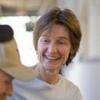The availability of ART immediately after the diagnosis of HIV offers many possible benefits, including earlier engagement in care and earlier HIV suppression, which may result in personal and public health benefits. Based on randomized clinical trials done in developing-world settings, the World Health Organization now recommends starting ART within 7 days of HIV diagnosis. However, this approach is not yet recommended as a general practice in the United States by the DHHS Guidelines.
Several presentations at CROI examined immediate ART initiation strategies in U.S. settings. Foremost among these was an analysis of San Francisco's RAPID program, which is supported by the San Francisco Department of Public Health and the Getting to Zero Consortium, a multisector group formed to reduce HIV infections and HIV deaths in San Francisco.(1) The RAPID program attempts to link all persons with new HIV diagnoses to HIV care within 5 days of diagnosis, and to start ART at the first care visit (unless there are contraindications to doing so or the patient is unwilling to start). The current analysis examines metrics from 2013 (when there were 399 new diagnoses in the city) through 2016 (258 new diagnoses), and shows substantial drops in median days from:
- HIV diagnosis to first clinic visit (from 8 to 5)
- First clinic visit to ART start (from 27 to 1)
- HIV diagnosis to HIV RNA <200 copies/mL (from 134 to 61)
These data were stratified according to race/ethnicity and housing status; substantial improvements over time were seen in all racial groups and in both housed and homeless persons. Although disparities between groups were noted, these lessened over the course of the study period.
Of the RAPID ART initiations, 55% were done in public health settings, primarily the city STD clinic and the DPH hospital and affiliated clinic sites.
On a municipal level, through implementation of RAPID ART, San Francisco has seen significant improvements in time to ART initiation and HIV virologic suppression, including in vulnerable and hard-to-engage groups, and in safety-net clinical settings. Investigators acknowledged the important roles that linkage and navigation services, provider and public education, systematic use of data to refine care, and other services played in attaining these goals, and pointed out that ongoing efforts are needed to understand retention in care, and to reach the 16% of persons with new HIV diagnoses in 2016 who did not start ART.
Other instructive and impressive presentations in immediate ART initiatives in the United States included early data from the New York City DPH, which has rolled out immediate ART in all its sexual health clinics, and from Emory University's "rapid entry program" at the Grady Hospital Ryan White-funded clinic in Atlanta.(2,3)
Clinical Bottom Line
Although not yet recommended by DHHS Guidelines, immediate initiation of ART after HIV diagnosis has become routine practice in a number of clinics, health care systems, and municipalities in the United States. Further studies of this approach are ongoing, but early data on uptake and on viral suppression, even in marginalized populations, are extremely encouraging.
References
1. Bacon O, Chin JC, Hsu L, et al. The RAPID ART Program Initiative for HIV Diagnoses (RAPID) in San Francisco. In: Program and abstracts of the 2018 Conference on Retroviruses and Opportunistic Infections; March 4-7, 2018; Boston. Abstract 93.
2. Blank S, Borges CM, Castro MA, et al. Getting a jump on HIV: expedited ARV treatment at NYC sexual health clinics, 2017. In: Program and abstracts of the 2018 Conference on Retroviruses and Opportunistic Infections; March 4-7, 2018; Boston. Abstract 1108.
3. Colasanti J, Sumitani J, Mehta CC, et al. A rapid entry program in the South: improving access to care and viral suppression. In: Program and abstracts of the 2018 Conference on Retroviruses and Opportunistic Infections; March 4-7, 2018; Boston. Abstract 1109.
Disclaimer: The author is a member of the RAPID Committee in San Francisco.
